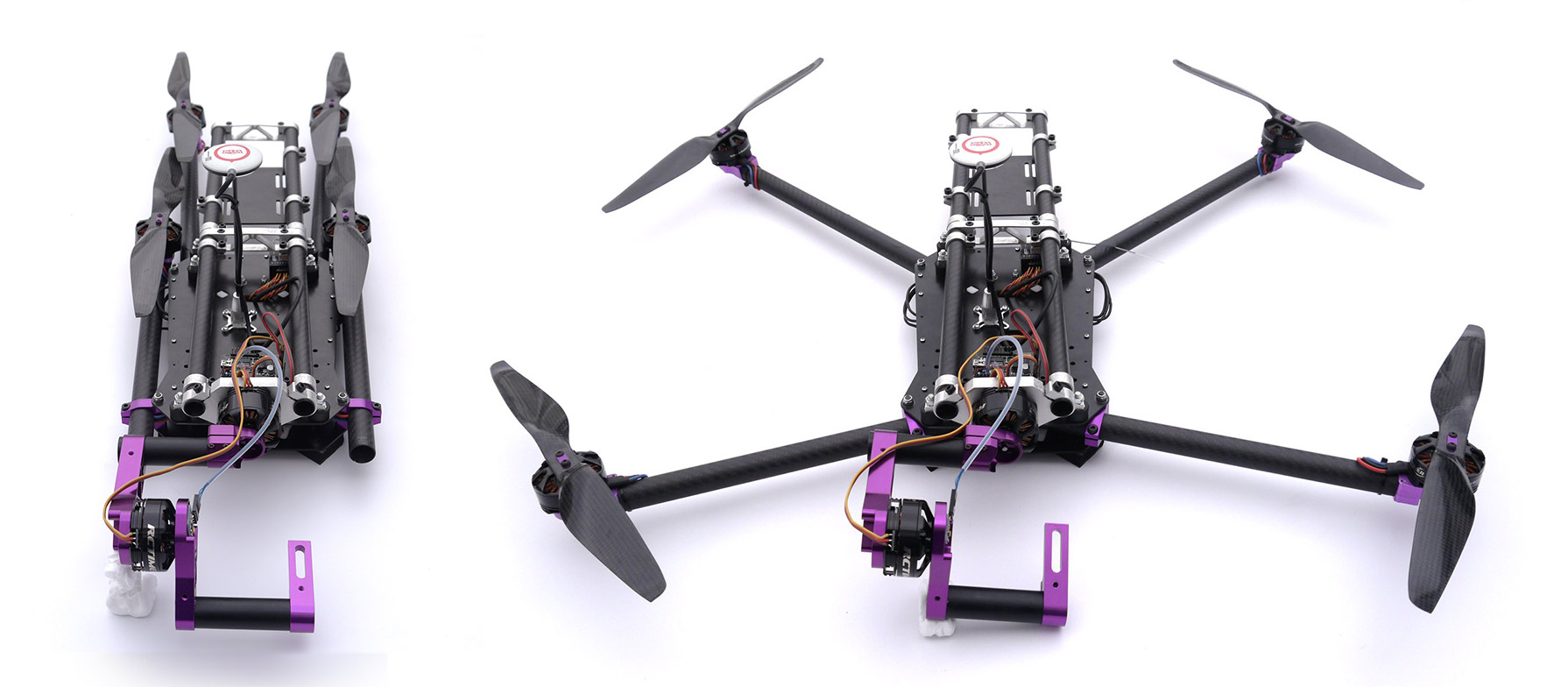Richard Glassock did his graduate work on small hybrid gas-electric systems, and keeps your editor current on that part of the aeronautical power spectrum. He recently shared one promising example of such technology in the drone market. Where current quadrotors are limited in size, power, and flight duration, the Quaternium Hybrix 20 is larger, heavier, and can fly for up to 2.5 hours, according to its makers. The, according to its Spanish maker Quaternium is six times the endurance of current camera-bearing drones.
The 20 weighs 11.3 kilograms (25 pounds) empty and can carry a 7 kilogram (15.4 pounds) payload. It approaches the current limit on the Small Unmanned Aerial System (SUAS) of 25 kilograms (55 pounds) and does not exceed the 100 mph speed limit for such systems.
The video, judging from the size of the vehicle relative to the human starter and pilot, is the 20. The 50 and 100 are proportional to their designation, based on the scaled drawings. The largest grosses out at 100 kilograms (220 pounds), something at which the FAA will probably take a long look.
While current drones might be able to tote a GoPro for a short photo-shoot, the largest of the Quaternium machines could probably carry an IMAX camera over the restaging of Waterloo. From the noise of the gasoline engine, though, camera operators will have a hard time sneaking up on the elusive ibex, and Julie Andrews would have to lip-synch while frolicking around the alpine meadows.

Spidex Pro is more closely related to hobby-type quadrotors, but with sophisticated gimbal mount for cameras. It is all-electric with much more limited endurance than Hybix models
The company’s smaller Spidex camera vehicle carries a smart-phone-based lens or other small cameras and a limited payload that would preclude anything heavier. The maker’s description suggests a difference from lesser quadrotors.
“Spidex PRO has a noble and accurate way to be piloted. Its clever design, with the gimbal stabilization device on the front and the center of gravity at the same height of the propeller thrust, avoids the pendulum or inertial effect that other devices suffer. The centered masses give that fast and precise pilotage that allows [it] to take very dynamic scenes, with speed and quick response to avoid obstacles.”
Designer J. L. Cortex is founder of Quaternium Technologies and is noted as “one of the pioneers in the field of multirotor engineering.” We look forward to seeing more complete specifications and a more detailed description of the hybrid system employed.


